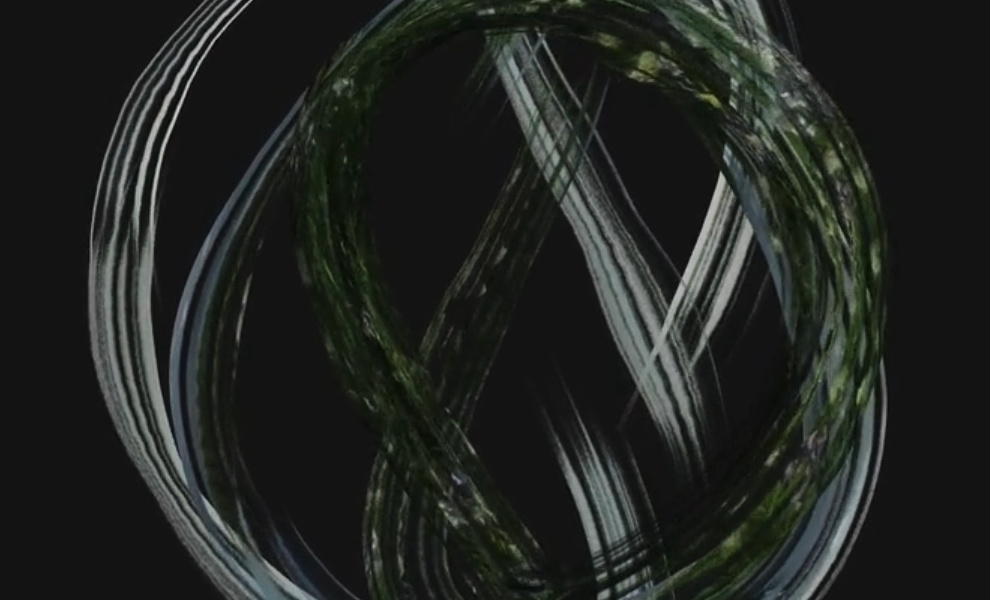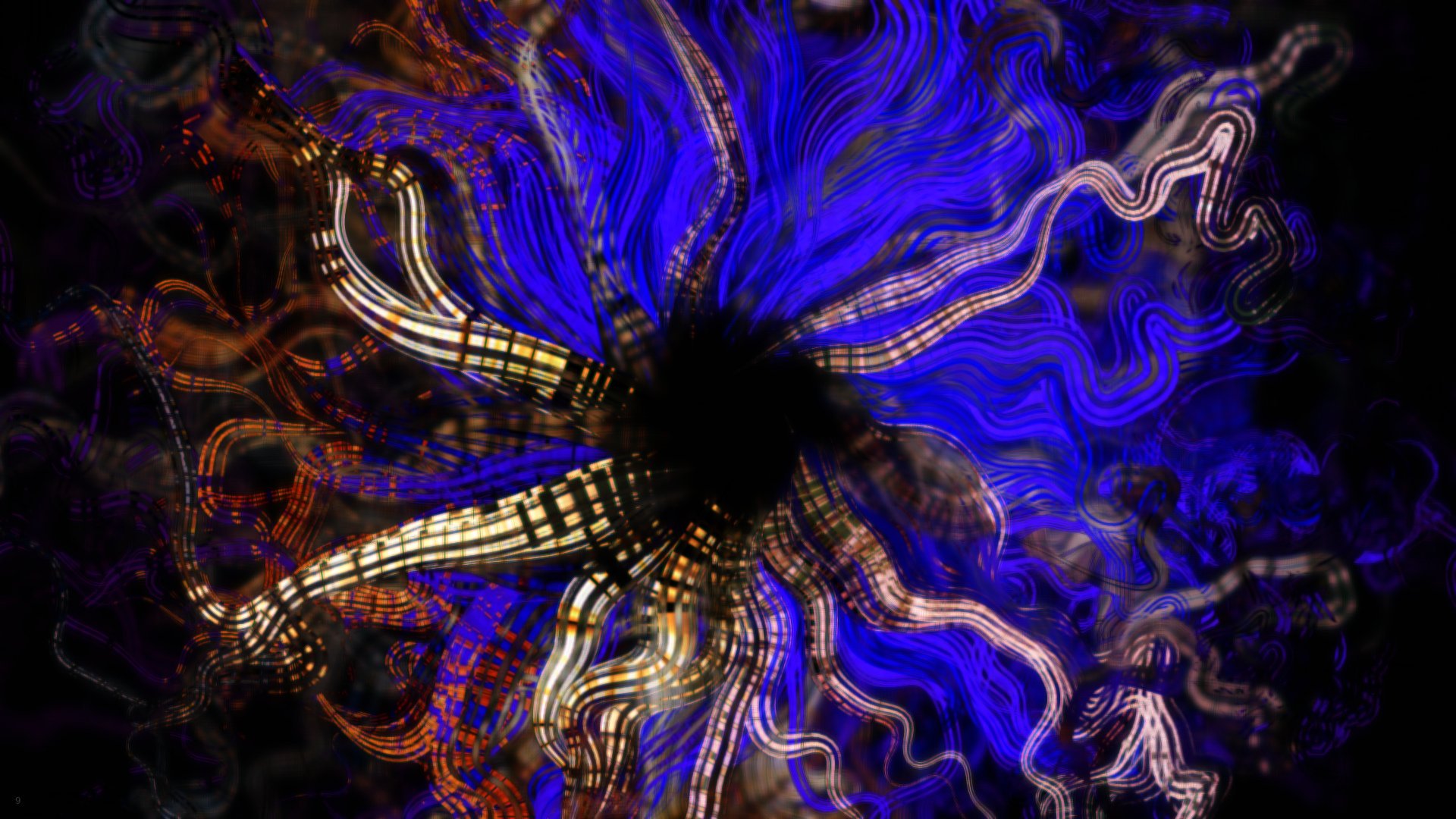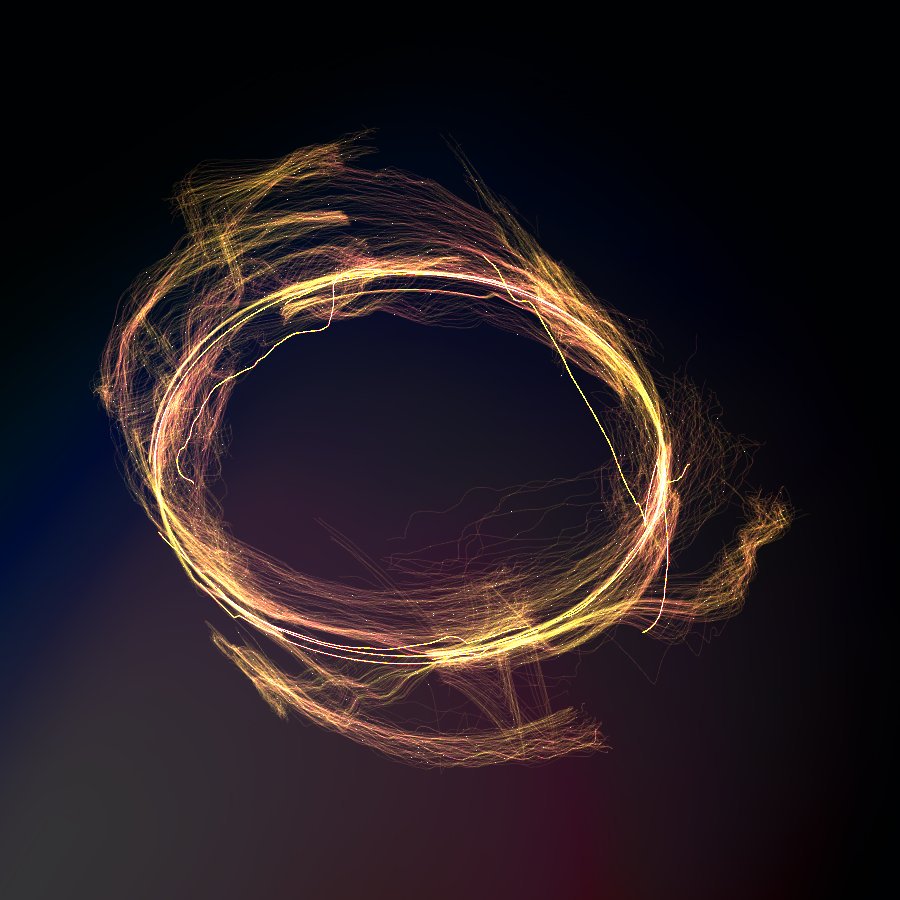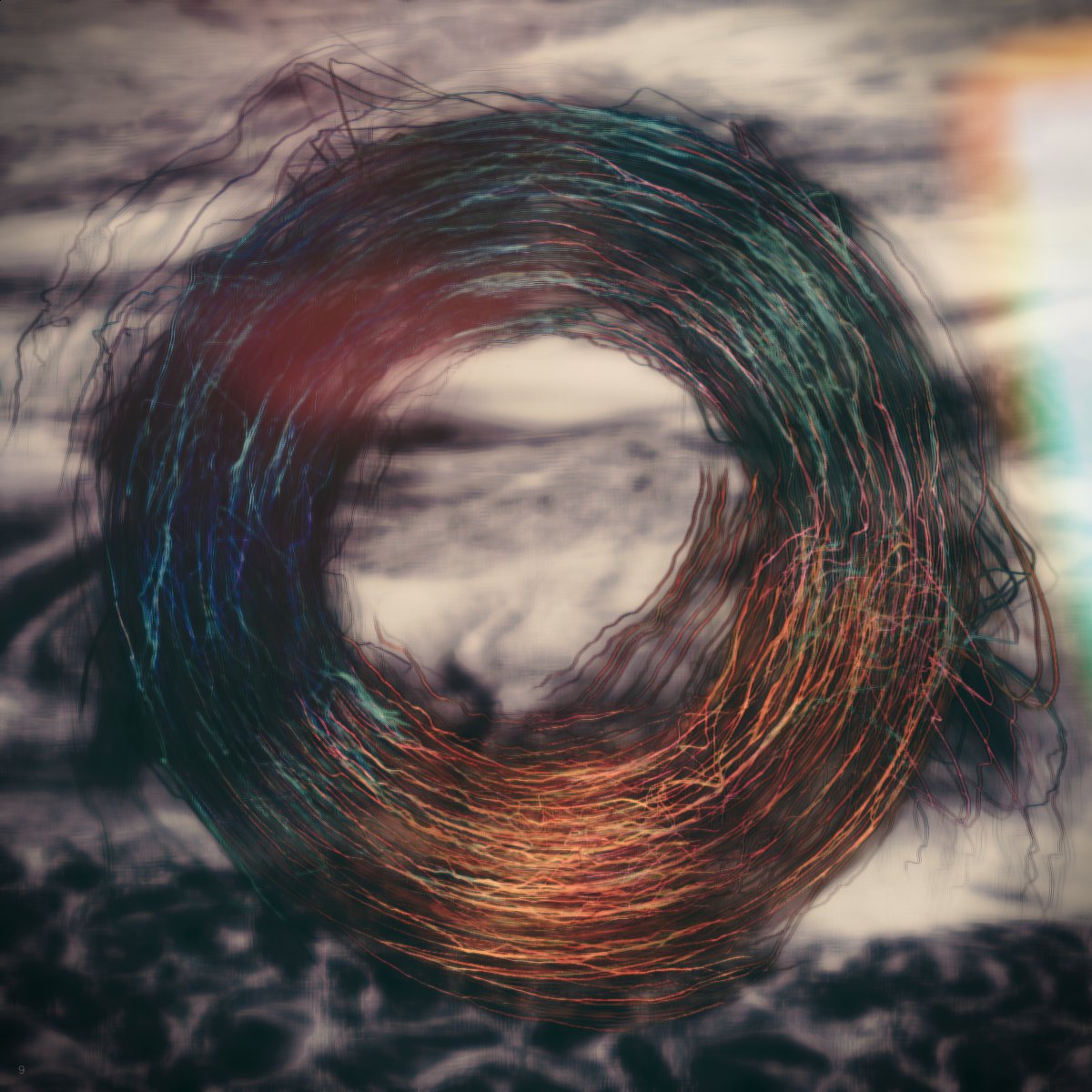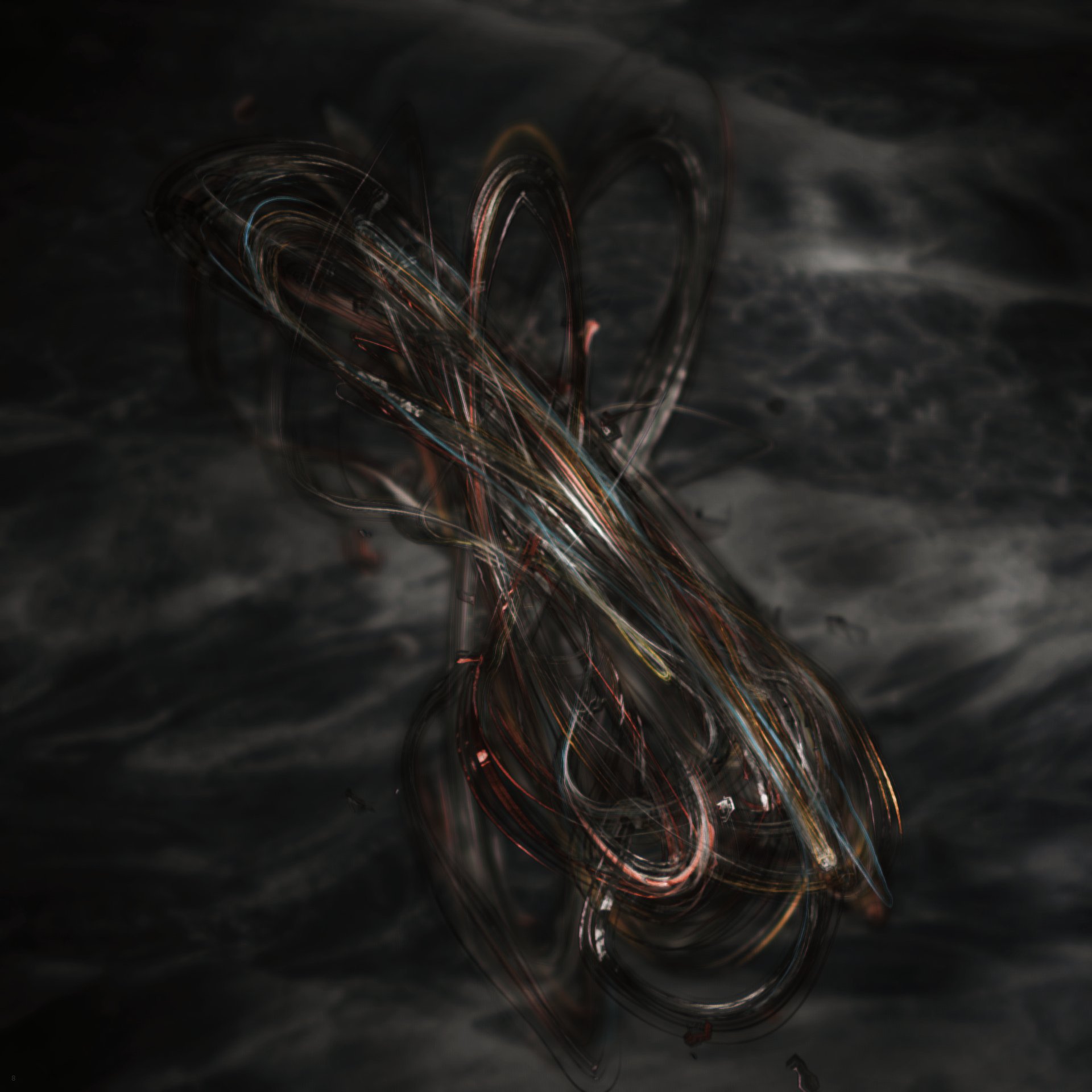Fri Mar 1, 2019
Floating Spectrum album cover artwork
Between January and March 2019 I worked on the artwork for Floating Spectrum’s debut album.
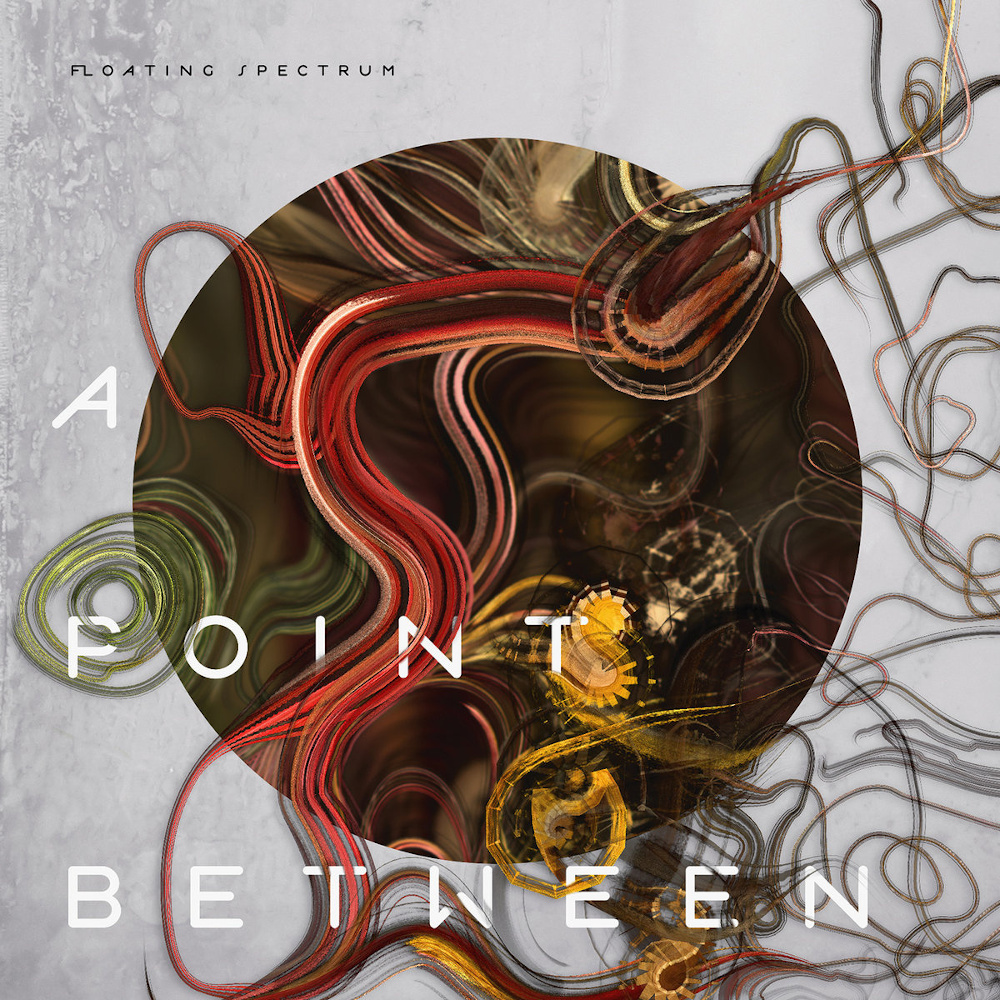
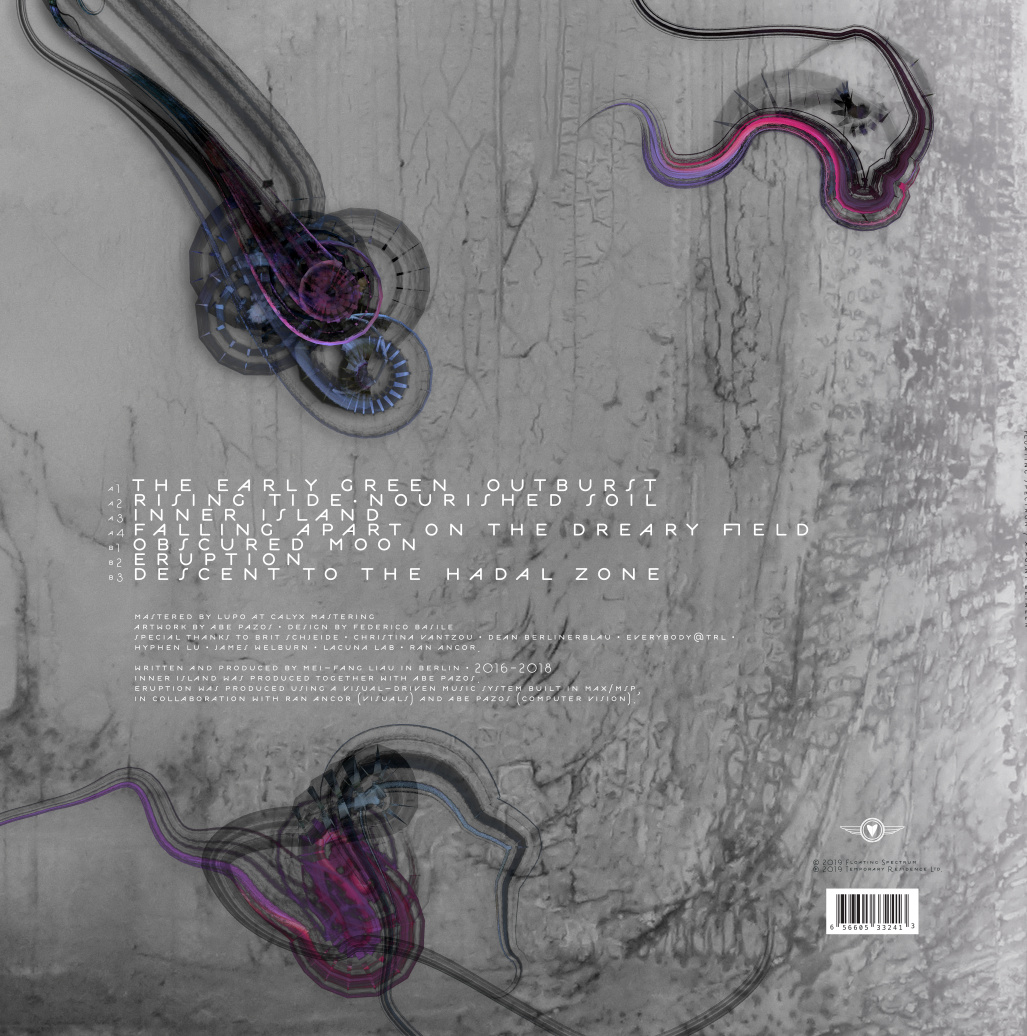
My approach to creating images is probably different to that of other designers. Instead of using existing software, I write my own. In this case using Processing as a graphics library.
Many of my image-generating programs do not have a graphical interface. That means there are no buttons or sliders. Instead, I press keys on the keyboard. I often repeteadly press the space bar to request new images and when I see something I like I press S to save. Very primitive.
Most of my programs have a random aspect which I control by changing the source code of the program. By using randomness the program can surprise me with interesting results, and I act as curator, deciding what is worth keeping and what is not. In the following example, the program produces 5 designs but I decide to save only one of them.

To have more control sometimes I implement an undo feature, so the program adds complexity to my painting when I press a certain key but I can still revert the latest change if I don’t like it. In the following example I keep adding content, but I undo the large brown rectangle because it’s not what I’m looking for.

To generate the artwork for A Point Between I wanted something more advanced, an interactive approach closer to painting. When I move the mouse I see in real time a curved stroke the program proposes to paint. If the stroke makes sense I click the mouse button to make it stay, like a stamp. If I don’t like the suggested stroke I keep moving the mouse searching for a shape that makes me happy. This is closer to a collaboration between painter and computer. The software proposes shapes and textures, but only the painter has an intention and makes final decisions.
To make it more expressive, the program offers multiple layers in which to draw, allowing me to paint blurry shapes in the background, and sharp shapes in front. This is powerful, because with traditional paint one can only add paint in front, never behind.
Those layers can be independently saved to disk and loaded later, in case I paint something I don’t like and I want to jump back to a previous version, or if I need to take a break and continue painting later.
There are two more interesting aspects in this painting program: one is pan and zoom. Since I work at a high resolution, I need to be able to zoom in to see the details, zoom out to see the big picture, and pan to different areas of the painting. I can do that by using the mouse wheel or dragging the mouse. A painter in real life would easily achieve this by moving closer to the canvas to see details or farther from it to observe the general composition.
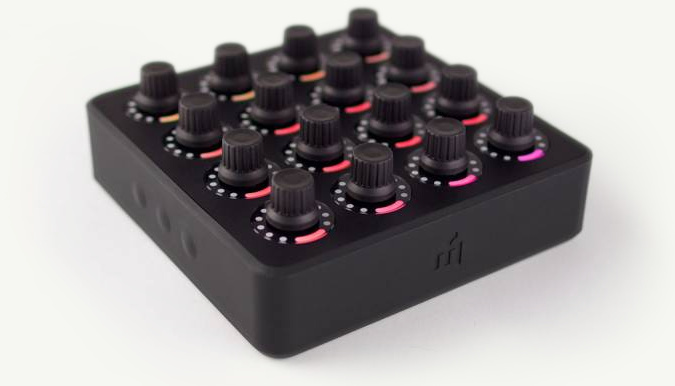
Finally, the other interesting aspect is the MIDI controller. I use a 16 knob hardware controller to change painting features like line thickness, transparency, curvature, etc. This lets me paint with the right hand, change the paint quality with my left hand, and keep my eyes on the canvas.
The project started with two different experiments: a line rendering test:
and a test of animated blur based on code I discovered in a meetup in Berlin:
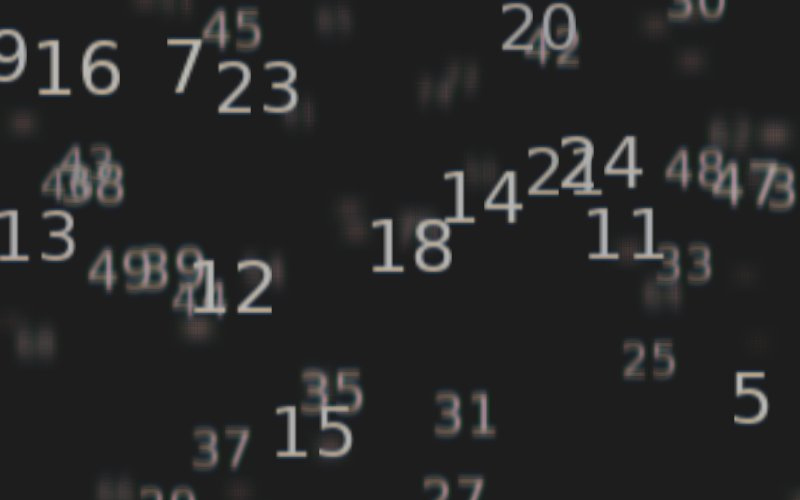
I combined lines with blur to achieve depth and it looked like this
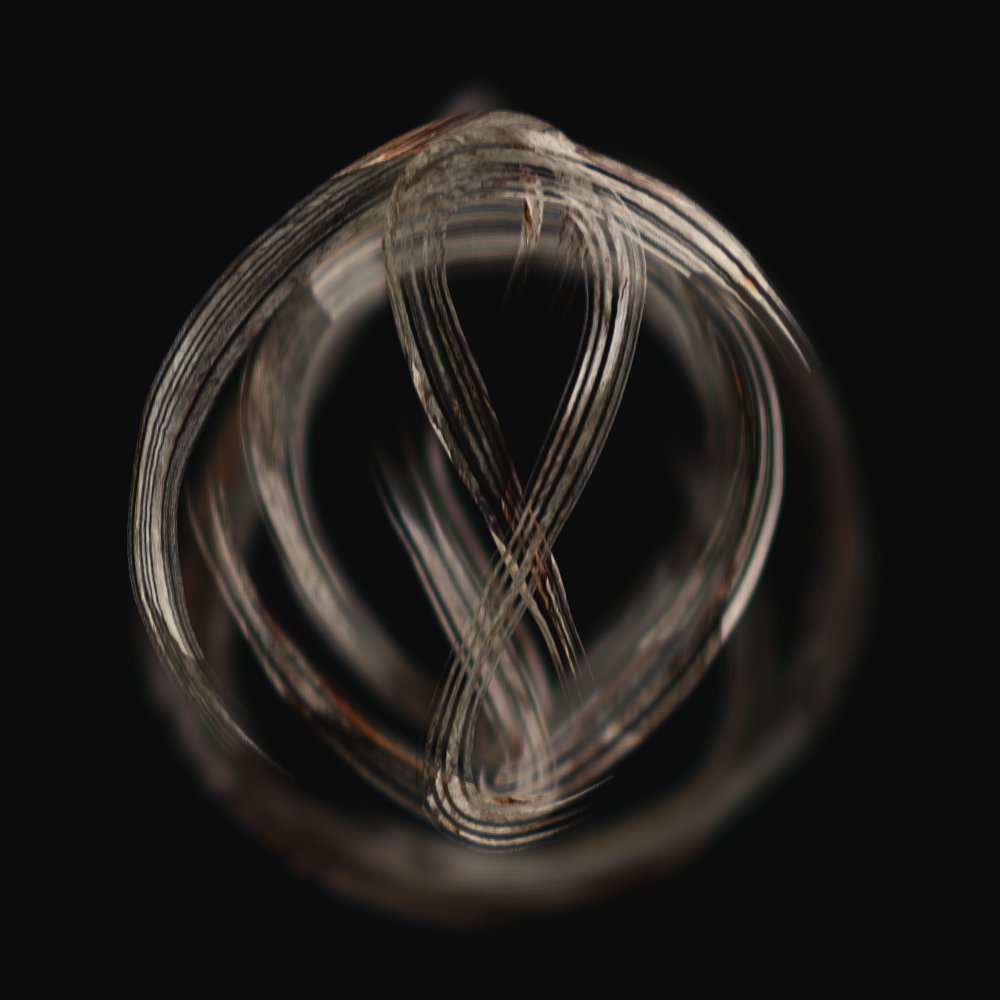 which I found very beautiful. This tweet
shows the effect enabled and disabled.
which I found very beautiful. This tweet
shows the effect enabled and disabled.
In duration of the project I generated hudreds of different images with different approaches.

This was an early experiment from December:
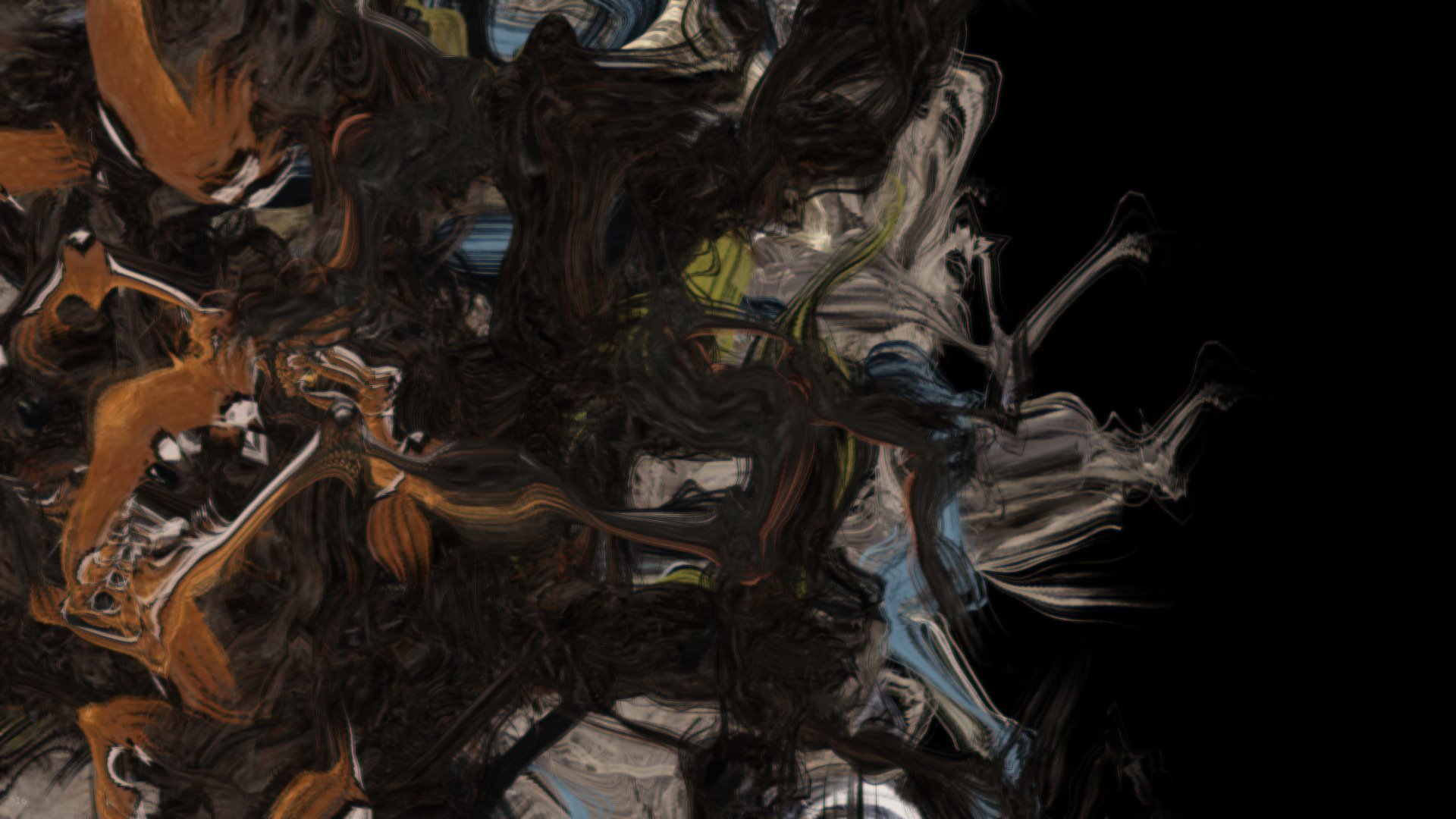
One aspect I didn’t mention earlier is that I used images for the colors, textures and as input for the algorithms. One of the images that made it to the cover is this one:

It’s an image of leaves we collected in the jungle in Taiwan. One topic in the album is growth and decay, so I decided to collect fallen leaves in a different state between growth and decay, creating a gradient going through various colors.
Here you can see the jungle
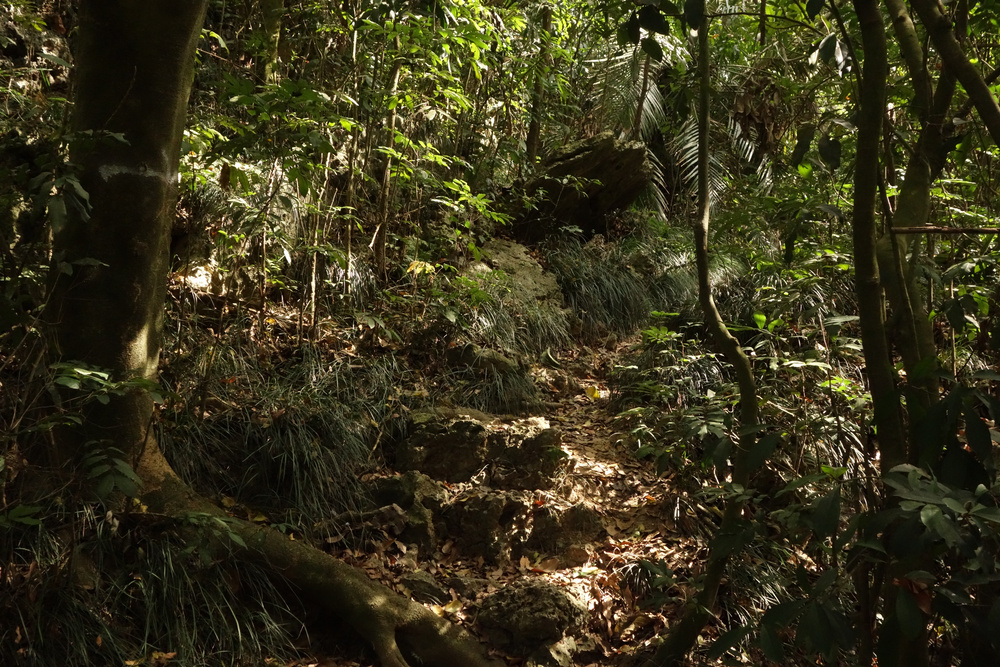
and one of those sneaky monkeys that quietly tried to steal our bag while we were busy sorting colorful leaves:
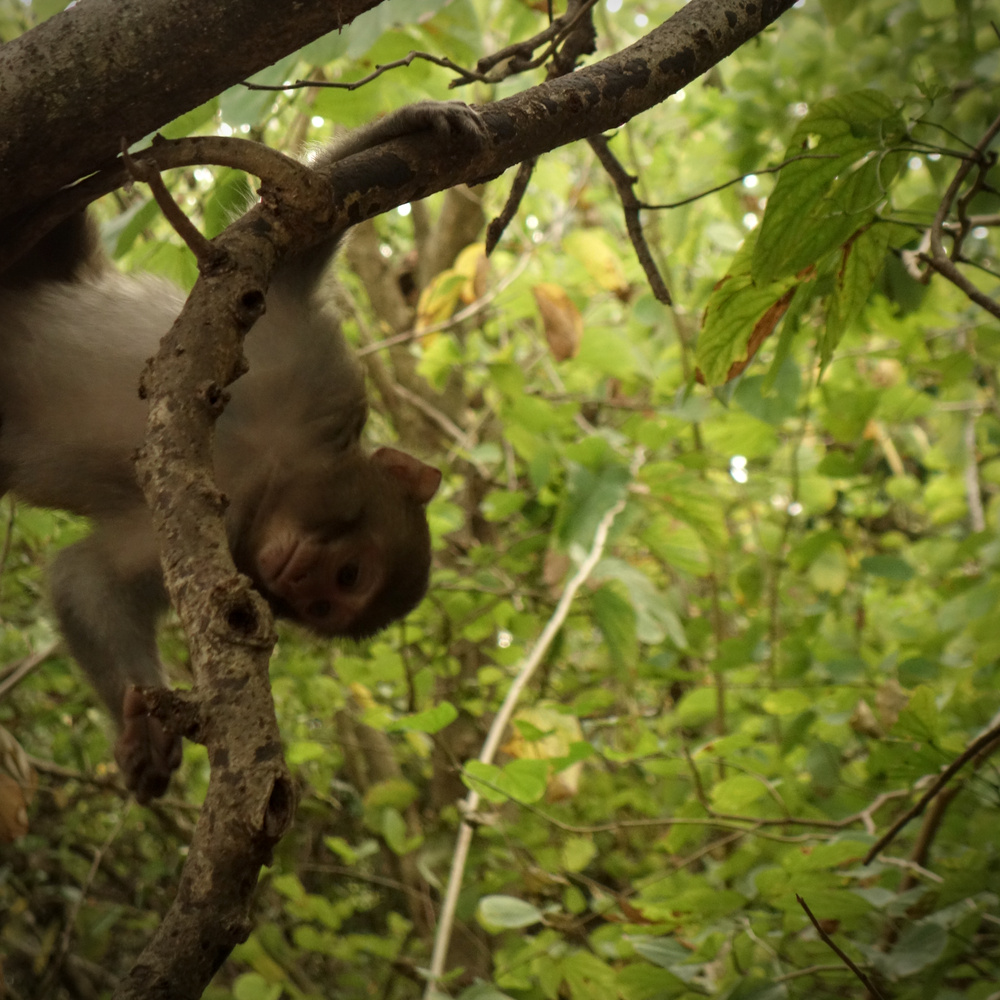
This is the final result. Painted line by line in about 90 minutes after spending weeks creating the painting tool itself:
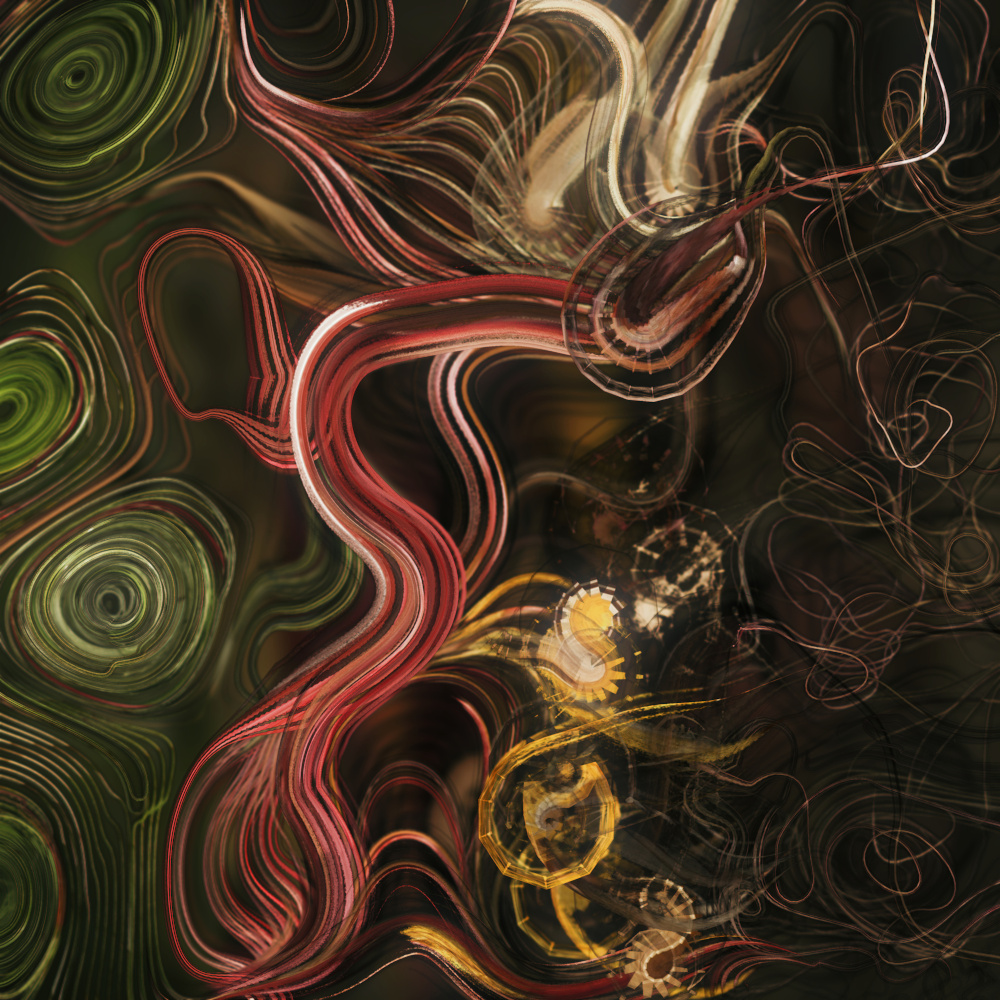
And two variations painted with the same program:

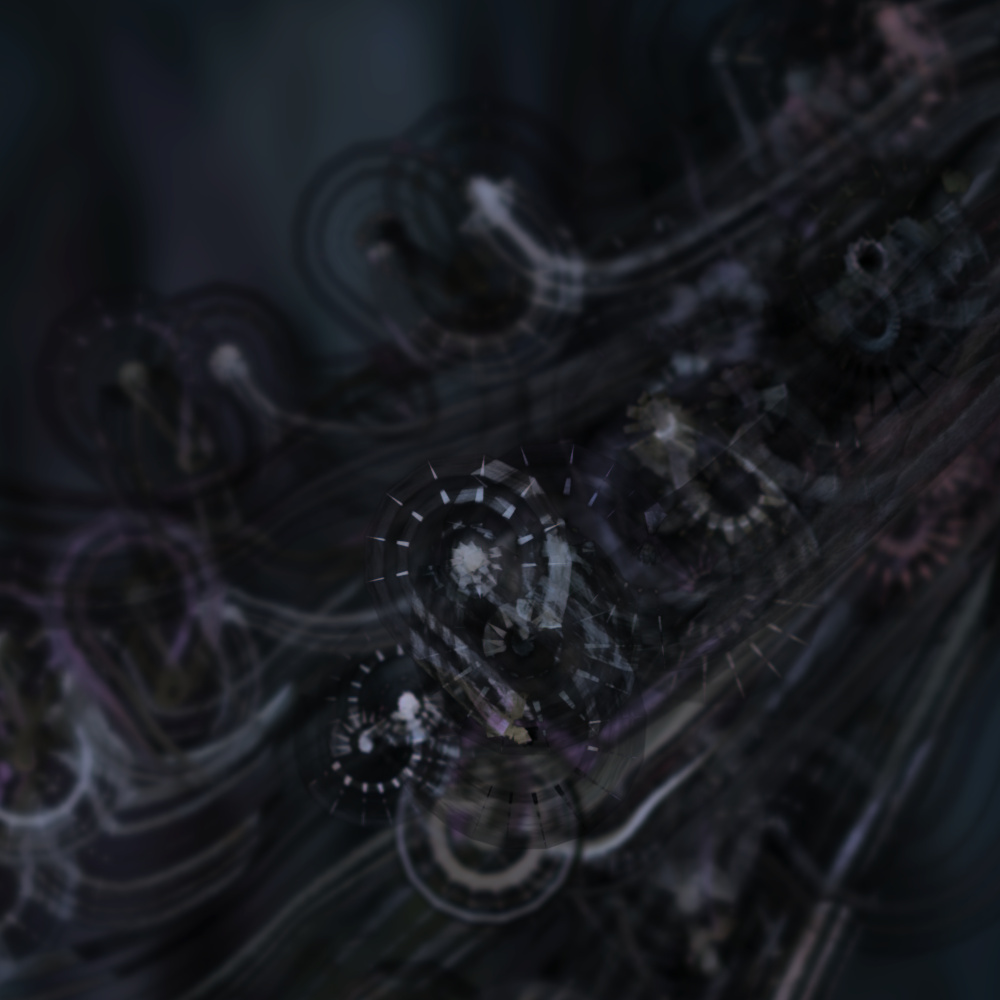
The final cover design (typography, layout, etc) was then composed by designer Federico Basile in Italy and it looks like this:


Thank you for your attention :)
If you are interested in the album please visit https://floatingspectrum.bandcamp.com/ or Temporary Residence.
